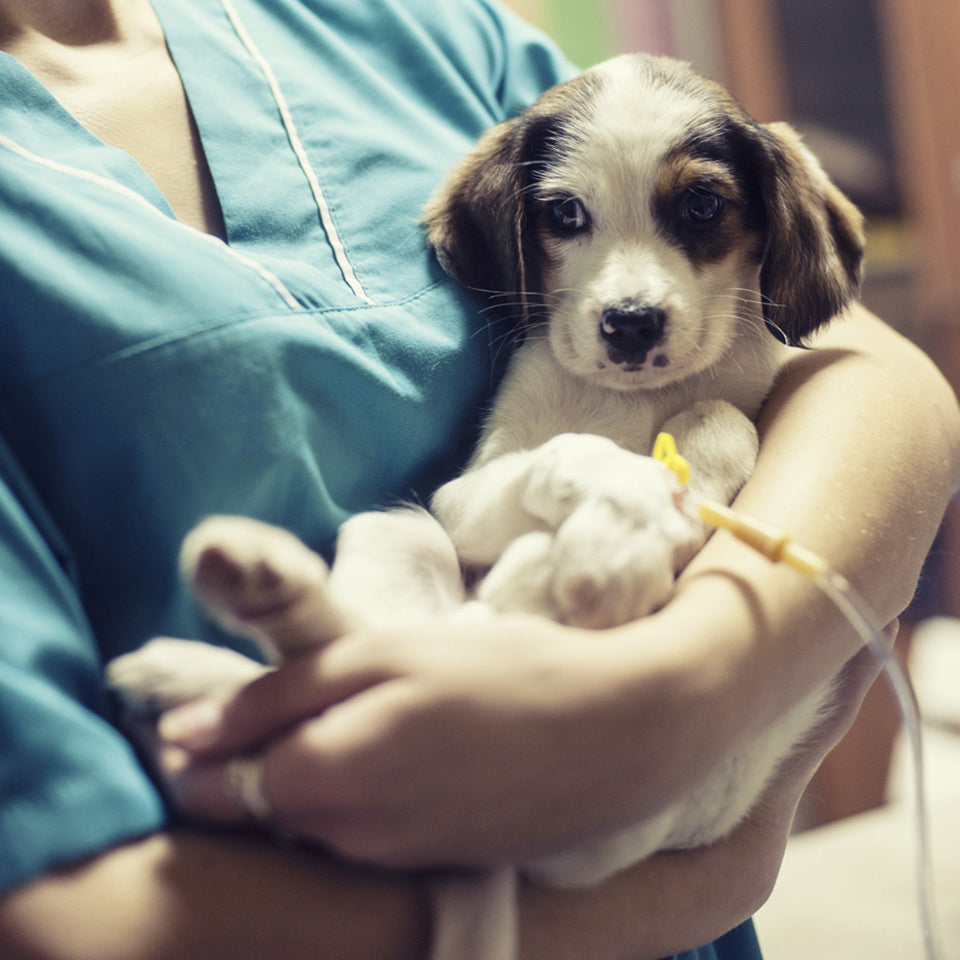What is Canine Parvovirus?
Canine parvovirus is a highly contagious virus that causes gastrointestinal sickness in puppies and dogs who have not been immunized. Anorexia, lethargy, vomiting, and diarrhea, which is frequently hemorrhagic, are common symptoms.
The diagnosis is usually made based on the patient's medical history, physical exam findings, and fecal antigen testing. Because specialized therapies are not accessible, treatment is mostly supportive, whether on an inpatient or outpatient basis.
Although its precise origin is unknown, it is thought to have evolved from the feline panleukopenia virus, a non-enveloped, single-stranded DNA virus that is resistant to many common detergents and disinfectants, as well as temperature and pH changes. It can also live indoors for at least two months at room temperature; outdoors, if protected from sunlight and desiccation, it can live for many months, if not years.

Susceptibility
Puppies born to a dam with CPV antibodies are protected from infection for the first few weeks of life, assuming adequate colostrum ingestion; however, susceptibility to infection increases as maternally acquired antibody wanes.
Stress (from weaning, overcrowding, malnutrition, and so on), concurrent intestinal parasitism, or enteric pathogen infection (eg, Clostridium spp, Campylobacter spp, Salmonella spp, Giardia spp, coronavirus) have all been linked to more severe clinical illness.
Intact male dogs are more likely than intact female dogs to develop CPV enteritis in dogs older than 6 months.
Breeds that have been identified as being at increased risk include:
- Rottweilers
- Doberman Pinschers
- American Pit Bull Terriers
- English Springer Spaniels
- German Shepherds
Transmission
Infection is acquired either directly or indirectly through contact with contaminated feces in the orally or nasally, or indirectly through contact with virus-contaminated fomites (eg, environment, personnel, equipment).
The virus is shed in the stool of infected dogs within 4–5 days of exposure (often before clinical signs appear), during illness, and for 10 days after clinical recovery.
Signs of Parvovirus
Some of the signs of parvovirus include:
- Lethargy
- Loss of appetite
- Abdominal pain
- Bloating
- Fever or low body temperature (hypothermia)
- Vomiting
- Severe, often bloody, diarrhea
BE CAREFUL! Persistent vomiting and diarrhea can cause rapid dehydration, and damage to the intestines and immune system can cause septic shock.
Also, it’s not a rule that if a puppy or dog is having a bloody diarrhea that means he has parvovirus. There are a lot of reasons that can lead to bloody diarrhea in your dog (eg, foreign body, bacterial infections, intoxication...). Thus, make sure to refer to your vet and ask for further diagnostic tests before assuming anything.
What is the cure for Parvovirus?
Because there is no cure for parvovirus, treatment focuses on assisting the puppy’s body in fighting the virus.
Supportive care for parvovirus typically consists of the following:
- Inpatient care with intravenous fluids.
- Administration of antiemetic drugs, medications that prevent vomiting.
- Maintaining a good nutritional status, with a feeding tube if necessary.
- Any electrolyte imbalances or low blood glucose levels must be corrected.
- Administration of antibiotics especially in the case of sepsis. They may also be given to puppies who have a high fever or a low white blood cell count.
How to Protect Your Puppy Against Parvovirus?
- The most important thing is that you bring your puppy in on time for their vaccinations. If too much time passes between boosters, the vaccine series must be restarted to maintain The canine parvovirus vaccine is most commonly administered as part of a combination vaccine known by a variety of acronyms: DHPP, DAPP, DA2PP, DHLPP, and so on. To be considered fully vaccinated, a dog must receive a booster vaccine at the age of one year. Dogs should also be vaccinated every one to three years for the rest of their lives.
- Puppies should only socialize with fully vaccinated dogs until they are fully vaccinated themselves. Dog parks and other places where vaccination status is not guaranteed should be avoided.
- At training centers and dog schools, all puppies are required to have at least their first parvovirus vaccine, and early training and socialization are critical.
- If you work or spend time in places where you have contact with dogs, change your clothes and shoes before returning home to your dog or puppy.
- When visiting your vet for wellness check-ups and vaccinations, carry your puppy in your arms outside and leave him on your lap while waiting in the lobby.

